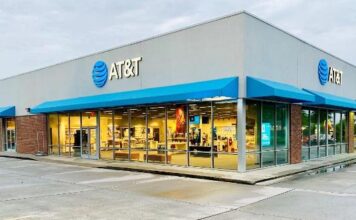Telecom Lead America: SoftBank has acquired Sprint in a $20 billion deal. But Softbank faces several key challenges.
Japanese telecoms investment firm and operator SoftBank’s $20.1 billion investment, including $8 billion cash, in the third-largest US mobile operator, Sprint, is significant.
It should not only enable Sprint to complete its Network Vision network consolidation project on time, but also to increase the speed of deploying LTE. However, because Sprint is in a distant third position in the mobile market in the USA, SoftBank will need to take another big step to change the dynamics of the US 4G market in its favour. We suggest that Clearwire’s spectrum could provide the key that could really unlock growth opportunities for SoftBank in the USA.
SoftBank will face significant challenges in pulling Sprint out of its third-place position in the US mobile market
SoftBank’s investment in Sprint is likely to look neutral to slightly negative in terms of return on investment for the next two years. Sprint is the third-largest operator in the USA, in terms of subscribers (see Figure 1), and we do not expect this position to change in the next two years. Taking a longer-term view of 3–5 years, SoftBank may repeat the success it had in the mobile market in Japan, where it vaulted from a weak third-place position to a strong second. However, it will need to employ a different strategy from that used in Japan because a low-cost play alone will not move Sprint into a leading position in the USA.
An infusion of capital will not guarantee Sprint’s success. It is a competitive number three, but it must complete its Network Vision consolidation project to address the spectrum refarming and technology issues of pulling its iDen, CDMA and the Clearwire WiMAX networks together and it needs to accelerate its LTE deployment. The fourth-largest operator, T-Mobile, is also on its heels. T-Mobile is newly capitalised and energised with spectrum – it received USD3 billion via the recent AT&T merger termination agreement, and the advanced wireless services (AWS) spectrum swap with Verizon resulted in it owning large contiguous blocks of spectrum. Furthermore, T-Mobile is considering a merger with MetroPCS that would make it competitive in the prepaid market, which historically has been Sprint’s strong point.
Sprint has three key challenges ahead. First, it must launch LTE nationwide in the next 2 years in order to compete with AT&T, Verizon Wireless’s established LTE networks and T-Mobile’s expected LTE launch. Second, it needs to regain control of Clearwire and its network. Then it needs to add approximately 40 million subscribers in order to compete on the same scale with AT&T and Verizon Wireless. These subscribers will have to be won, not just bought, in a highly competitive market where Sprint is 3 years behind Verizon Wireless in deploying LTE. This is a huge challenge for Sprint/SoftBank. SoftBank was successful with a low-cost/low-price strategy in Japan’s mobile market, but duplicating that strategy in the USA is likely to keep Sprint in third place, battling with T-Mobile. Taking on the top-two operators’ 4G networks will require extensive national network coverage, high capacity, top performance and an extensive device portfolio – all four have been challenges in Sprint’s network. However, Sprint has a potential ‘ace up its sleeve’ and that is its 48% stake in Clearwire.
SoftBank should consider providing 100Mbps Internet connections in the USA
High-speed networks will be the key to success in the 4G market. SoftBank has repeatedly commented on how ‘slow’ the US networks are. According to our tests, the US LTE networks are reaching maximum speeds of 50Mbps, but are more commonly operating at 8–16Mbps.
What is missing from the US competitive 4G landscape is a true 100Mbps operator and Clearwire could be that operator. Sprint effectively relinquished control of Clearwire, but we expect the company to move to re-take control, which it may be able to do without further monetary investment. The 2.5GHz spectrum licensed by Clearwire could provide 50–100Mbps Internet service with the proper technology investments (TD-LTE) and SoftBank can provide network expertise in this area. Clearwire has had funding problems, but would be a perfect fit for SoftBank’s corporate strategy. Sprint re-taking control of Clearwire would be a logical and potentially game-changing step.
SoftBank will need to advance Sprint’s market position in the next 2 to 3 years, but the priority for this year and next is completing Sprint’s Network Vision plan. While it is easy for SoftBank/Sprint to set its sights on market leadership, losing track of T-Mobile is not advised. SoftBank’s investment in Sprint is a good start, but regaining control of Clearwire is likely to be the game changer for the US market. It is up to SoftBank to make the next move.
Chris Nicoll, principal analyst, Analysys Mason
[email protected]






